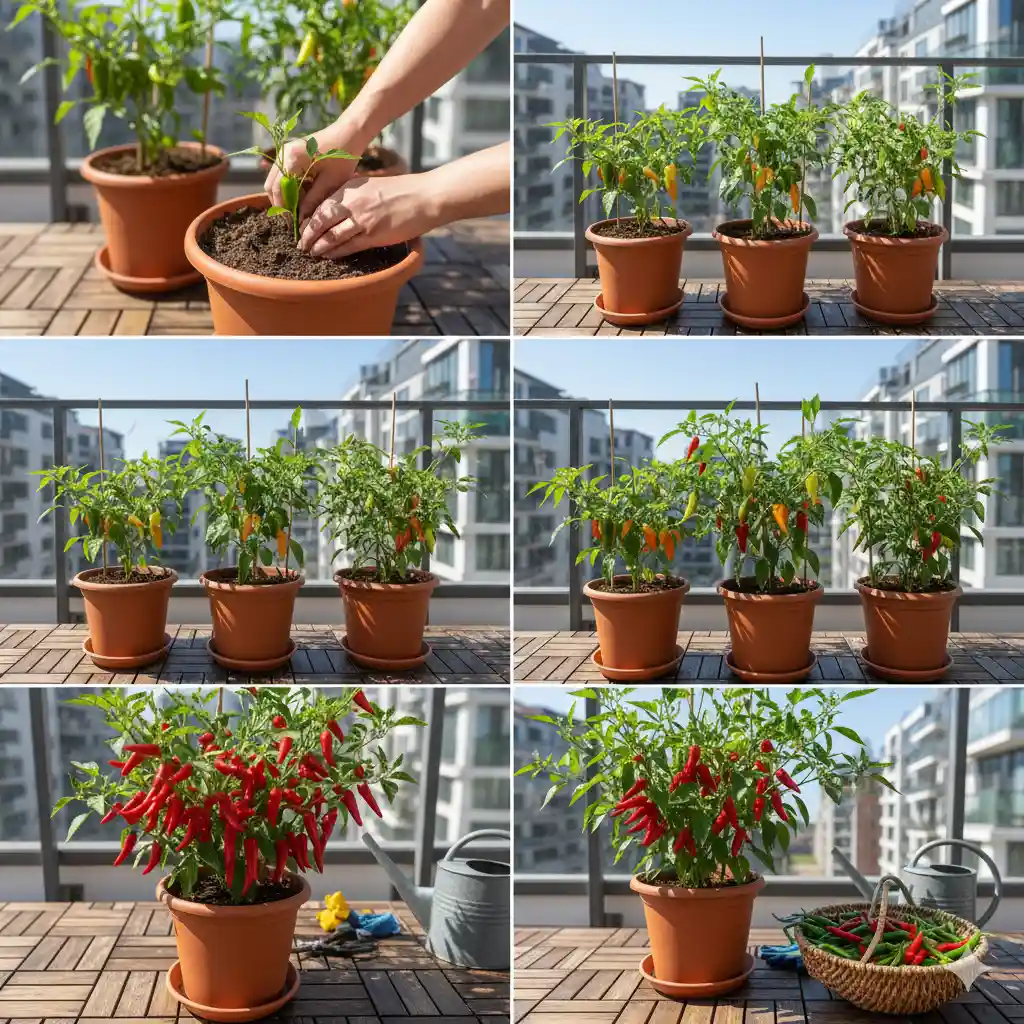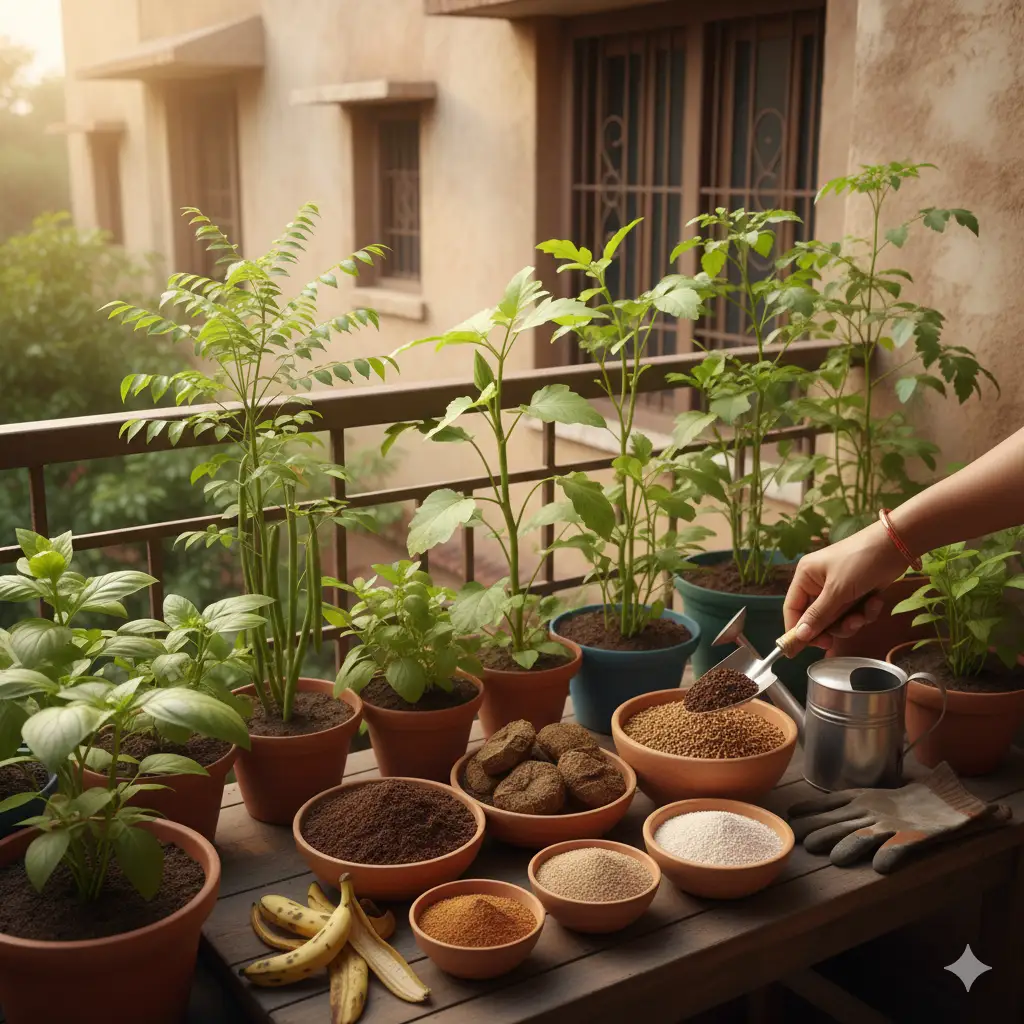How to Grow Chillies in Pots Step by Step: A Complete Beginner-Friendly Guide
Learn how to grow chillies in pots step by step at home, even if you live in a small flat or have zero gardening experience. This detailed guide covers pot selection, soil mix, watering schedule, sunlight needs, fertilizing, and common mistakes Indian beginners should avoid.

How to Grow Chillies in Pots Step by Step: A Complete Beginner-Friendly Guide
If you have ever dreamed of plucking fresh green chillies straight from your own balcony or terrace garden, you are not alone. Growing chillies at home in pots has become extremely popular among urban Indian households. The good news? Chillies are one of the easiest and fastest-growing plants, even for complete beginners.
In this detailed guide, you will learn exactly how to grow chillies in pots step by step, using simple methods that work perfectly in Indian weather. Whether you live in Delhi, Mumbai, Chennai, Bengaluru, Kolkata, or a small town, these steps will help you grow healthy, high-yield chilli plants with very little effort.
Why Growing Chillies in Pots Is Perfect for Indian Homes
Chilli plants do extremely well in containers because they don’t need too much space. One pot can give you dozens of fresh chillies every month. They grow well in sunlight, handle heat efficiently, and don’t need too much care. You can grow them on a balcony, terrace, kitchen window, or even inside your room if there is enough light.
Step 1: Selecting the Right Chilli Variety
You can grow any chilli variety in pots, but some are easier and faster for beginners. Here are the best options:
- Desi Green Chillies (the ones we use for tadka and daily cooking)
- Bird’s Eye Chillies (small, fast-growing, very spicy)
- Kashmiri Chilli (less spicy, beautiful red colour)
- Long Green Hybrid Chillies (high yield, great for beginners)
If you want quick results, choose seeds from fresh chillies you already have at home. Just remove the seeds, dry them for a day, and they are ready to sow.
Step 2: Choosing the Right Pot
The pot you choose decides how strong your chilli plant becomes. The ideal size is:
- 8 to 12 inches deep
- Wide enough for roots to spread
Make sure the pot has drainage holes at the bottom. Chillies hate waterlogging, and excess water can kill the plant.
You can use:
- Plastic pots
- Terracotta pots
- Grow bags
Grow bags are the best because they allow better air flow, helping the roots stay healthy.
Step 3: Preparing the Perfect Soil Mix
A healthy soil mix decides 50% of your success. Chillies grow best in light, well-draining soil. Use this simple soil recipe:
- 40% Garden Soil
- 40% Compost or Cow Dung Manure
- 20% Cocopeat or Sand
This mix keeps the soil airy, prevents fungal infections, and gives the plant constant nutrition.
Step 4: Sowing Chilli Seeds Properly
There are two ways to start chilli seeds:
- Directly sowing in the final pot
- Starting in a small seed tray or container
The second method gives a better success rate.
How to Sow Seeds Step by Step:
- Fill the pot or tray with your soil mix.
- Place the seeds 1 cm deep.
- Cover gently with soil.
- Spray water lightly (do not overwater).
- Keep the pot in partial sunlight until seeds sprout.
Seeds usually germinate in 7–14 days depending on the climate.
Step 5: Transplanting Seedlings into Bigger Pots
Once the seedlings are about 3–4 inches tall and have 4–6 leaves, they are ready for transplanting.
To transplant:
- Fill your final pot with the soil mix.
- Make a hole in the centre.
- Gently remove the seedling along with the soil.
- Place it inside the hole and press lightly.
- Water gently.
Your chilli plant will take 3–5 days to adjust to the new pot.
Step 6: Sunlight Requirements
Chilli plants love sunlight. They need at least:
5 to 6 hours of direct sunlight daily.
If sunlight is low in your area, keep them near the sunniest window or balcony. Low sunlight may cause slow growth or fewer chillies.
Step 7: Watering the Right Way
The secret to a healthy chilli plant is correct watering. Overwatering is the biggest reason chilli plants die.
Water only when:
- The top soil feels dry when you touch it.
- Leaves look slightly droopy.
During summer, water daily. In winter, water every 2–3 days.
Always water gently near the soil, never on the leaves.
Step 8: Fertilizing for More Chillies
Chilli plants need nutrients every 2–3 weeks for heavy fruiting.
The best fertilizers for chillies in pots are:
- Vermicompost
- Cow dung compost
- Banana peel fertilizer (potassium-rich for more fruit)
- Seaweed solution
- Mustard cake liquid (very effective for Indian climates)
Do not over-fertilize. It can burn the plant roots.
Step 9: Supporting the Plant
As chilli plants grow tall, they may start leaning due to wind or the weight of the fruits. Use a small stick or bamboo support to keep the plant straight.
Step 10: Protecting the Plant from Pests
Common pests for chilli plants include:
- Aphids
- Whiteflies
- Mealybugs
The best natural pest control is:
Neem oil spray (1 tablespoon neem oil + 1 liter water + a few drops of liquid soap).
Spray once a week in the evening.
Step 11: Harvesting Time
Chillies are usually ready to harvest within 60–90 days after planting. You can pluck them while they are green, or wait for them to turn red for stronger flavour.
Harvesting regularly encourages more chillies to grow.
Common Mistakes Beginners Should Avoid
- Overwatering the plant
- Keeping the pot in low sunlight
- Using heavy garden soil without compost
- Not pruning or supporting the plant
- Ignoring early pest attack signs
Final Thoughts
Growing chillies in pots step by step is easy, rewarding, and perfect for beginners. With proper sunlight, the right soil mix, and timely watering, your chilli plants will start producing fresh, chemical-free chillies right in your home. The satisfaction of growing your own food is something you will love once you experience it.
Whether you live in a small flat or a big house, all you need is one pot, a handful of seeds, and a little patience. Very soon, you will be enjoying fresh home-grown chillies in your kitchen every single week.




